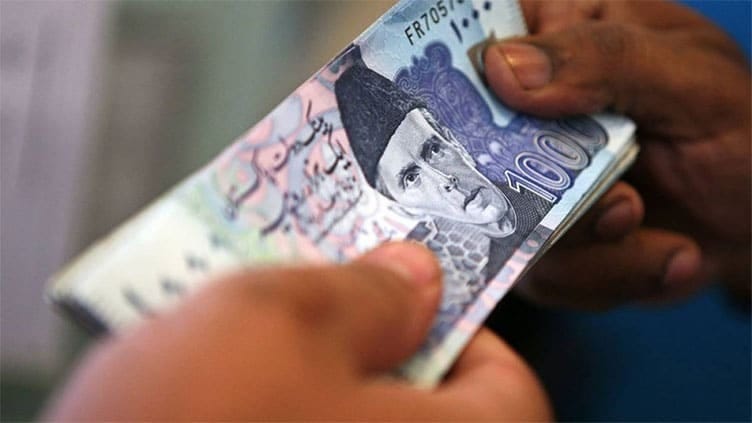Karachi Flooding 2025 Heavy Rainfall Causes Widespread Damage
Introduction
Karachi faced one of the most severe spells of rain in recent years as heavy showers triggered Karachi flooding 2025, paralyzing daily life across the metropolis. The downpour left major roads submerged, neighborhoods inundated, and thousands of residents stranded. Public transport collapsed, electricity supply was cut in several localities, and property damage mounted as floodwaters entered homes and businesses.
The situation once again highlighted the city’s fragile drainage infrastructure and lack of preparedness, as citizens struggled to cope with an increasingly common urban disaster.
The Impact of Heavy Rainfall on Karachi
The rain began in the early hours and continued with intensity throughout the day. Within hours, several major arteries such as Shahrah e Faisal, MA Jinnah Road, and Korangi Industrial Area were submerged. Smaller streets in low lying neighborhoods like Orangi Town, Lyari, Landhi, and Malir were completely underwater, making them inaccessible.
Traffic across the city came to a standstill. Commuters were forced to wait for hours, and many vehicles stalled in waist deep water. For thousands of workers, students, and patients, reaching their destinations became impossible.
Power outages added to the misery. Entire neighborhoods plunged into darkness as electricity supply was shut down to prevent electrocution incidents. The Karachi Water and Sewerage Board also reported contamination of water pipelines as floodwater mixed with drinking water.
Humanitarian Challenges During Karachi Flooding 2025
The flooding forced many families to leave their homes as water entered living spaces. In areas like North Karachi and Surjani Town, families were seen shifting to relatives’ homes or temporary shelters to escape the rising water levels.
Shopkeepers and small businesses were also badly affected. Marketplaces in Saddar, Gulshan e Iqbal, and Liaquatabad saw rainwater destroying goods, food supplies, and electronics. Economic losses are expected to run into millions of rupees.
Public transport services collapsed. Buses could not pass through submerged routes, rickshaws stalled, and ride hailing services suspended operations. For thousands of daily wage workers, this meant lost income and added economic stress.
Drainage System Failure in Karachi
The crisis once again exposed the weak drainage system of Karachi. According to city officials, most stormwater drains were clogged with garbage and plastic waste. Poor maintenance and encroachments along nullahs made water drainage almost impossible.
Over the years, several projects have been announced to overhaul Karachi’s drainage infrastructure, but very few have been completed. In 2020 and 2022, similar monsoon flooding brought the city to a halt, yet long term solutions remain absent.
Experts argue that Karachi’s drainage system was designed for a much smaller population. With over 20 million residents today, the outdated infrastructure is unable to handle the growing urban challenge.
Historical Context of Karachi Flooding
Karachi’s struggle with flooding is not new. During the 2007 monsoon season, the city saw severe damage as rainwater accumulated across main roads and residential colonies. In 2011, record breaking rains left thousands homeless. The 2020 floods were particularly devastating, submerging Clifton, Defence, and Korangi under several feet of water.
Each time, promises of reforms were made. However, with rapid urbanization, encroachment on natural drainage channels, and weak governance, the problem has worsened.
Climate Change and Karachi Flooding 2025
Climate experts warn that the frequency of extreme rainfall in Karachi is a direct consequence of climate change. Rising sea surface temperatures in the Arabian Sea are fueling stronger monsoon systems. Additionally, global warming has increased the unpredictability of weather patterns, causing sudden bursts of heavy rainfall.
Karachi, being a coastal megacity with poor infrastructure, is highly vulnerable. Experts believe that unless immediate climate adaptation measures are taken, such disasters will become more frequent.
Rescue and Relief Operations
Rescue services including the Edhi Foundation, Chhipa Welfare, and Pakistan Navy teams joined city authorities to help stranded citizens. Boats were used in some areas to evacuate people. Emergency helplines were activated to report incidents of water entering houses or medical emergencies.
Despite efforts, rescue workers struggled due to the sheer scale of flooding. In several neighborhoods, citizens had to take matters into their own hands, forming human chains to help pedestrians cross flooded streets.
Economic and Social Consequences of Karachi Flooding
The financial impact of the flooding is massive. Damaged vehicles, destroyed goods in shops, and halted industrial operations have caused economic losses in billions. Small businesses, already struggling due to inflation, now face additional challenges.
Socially, the disaster has once again created frustration among residents. Citizens criticized the authorities for lack of planning, corruption in drainage projects, and poor waste management. Many fear that without serious reforms, Karachi will continue to face similar disasters every monsoon.
Government Response and Long Term Measures
Authorities urged citizens to stay indoors and avoid unnecessary travel. The Sindh government announced emergency relief efforts and assured people that more pumps and machinery would be deployed. However, the promises are familiar, as similar statements were made in past crises.
Urban planners argue that only structural reforms can solve Karachi’s flooding. Key recommendations include
- Widening and clearing natural stormwater drains
- Building rainwater harvesting systems
- Improving solid waste management to prevent clogged drains
- Creating an updated urban drainage master plan
- Relocating illegal settlements on nullahs and canals
Adopting climate resilient infrastructure designs
Without these long term measures, Karachi will continue to face flooding disasters.
International Lessons for Karachi
Other megacities across the world have faced similar challenges but adopted reforms. For example
- Bangkok developed massive underground water tunnels to divert floodwaters
- Tokyo built one of the world’s largest underground flood control systems
- Dhaka introduced strict waste management and flood forecasting mechanisms
Karachi can learn from these cities by adopting technology driven and climate smart infrastructure projects.
Voices from Citizens
Residents expressed deep frustration. Many said they felt abandoned by authorities as water entered their homes without timely help. Shopkeepers lamented their losses, and daily wage workers shared how they missed work due to lack of transport.
Social media was filled with images and videos showing flooded streets, broken cars, and families wading through waist deep water. Citizens demanded accountability and long term solutions rather than temporary relief.
Conclusion
The Karachi flooding 2025 disaster has once again revealed the vulnerability of Pakistan’s largest city to heavy rainfall and poor urban planning. The flooding caused severe damage to property, disrupted transportation, and endangered lives. While rescue efforts were launched, the crisis highlighted structural failures in drainage, governance, and preparedness.
Going forward, Karachi must adopt modern drainage systems, enforce strict waste management, and implement climate resilient planning. Otherwise, with climate change accelerating, such disasters will continue to hit Pakistan’s financial hub with even greater intensity.
Karachi’s future depends on urgent reforms and responsible governance to ensure that millions of its residents can live without the constant fear of flooding every monsoon.
Read More Here:
Pakistan Asia Cup 2025 Squad Announced Salman Ali Agha to Lead in UAE
University of Lausanne Masters Scholarship 2026 in Switzerland
PCB Chairman Mohsin Naqvi Announces Rs 1 Million Reward for Hockey Team
















